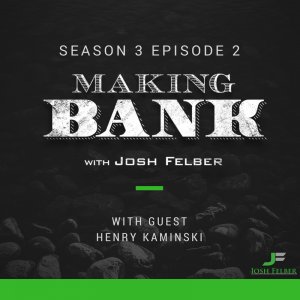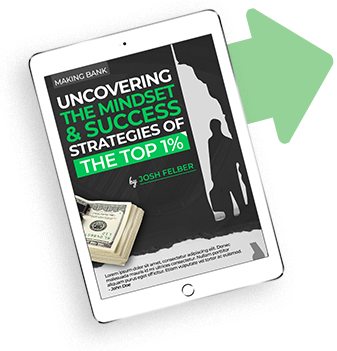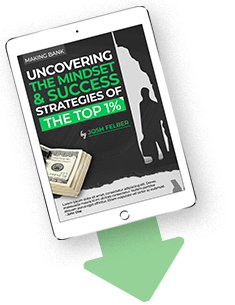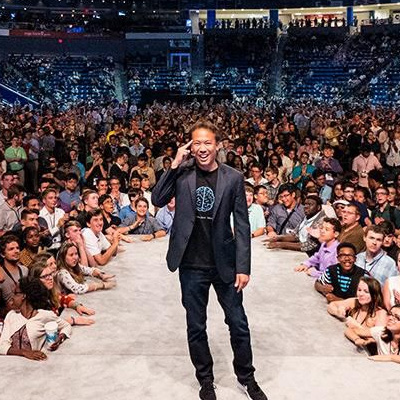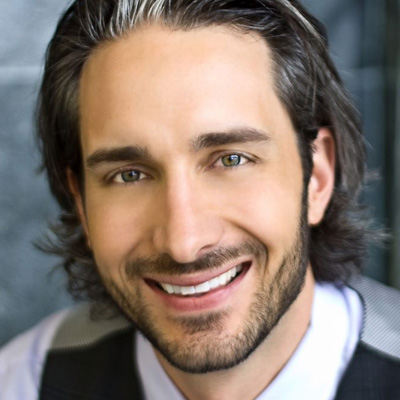Standing Out in a Crowded Market with Guest Henry Kaminski: Making Bank S3E2
with Henry Kaminski
Video:
Audio:
bit.ly/JoshFSubscribe
MAKING BANK is a weekly YouTube TV show and iTunes Podcast full of #Success and #Business with Josh.
Subscribe to iTunes: bit.ly/JoshF_Itunes
Summary
No matter which industry you’re in, the market is getting more and more crowded. Does your business truly stand out or is it lost in the noise?
Today on #MakingBank, host Josh Felber invites Henry Kaminski to discuss branding mistakes that entrepreneurs make and the business lessons he has learned building his company. He shares some excellent advice on delegation and why it is so crucial to your success.
Henry is the founder of Unique Designz, a full-service graphic design, print, and marketing company. As a self-taught graphic designer and passionate entrepreneur, he’s overcome all the odds to build a wildly successful multi-million-dollar business. He has worked with a diverse range of business owners and professionals, including John Bon Jovi and Internet marketer Russell Brunson. Ultimately, Henry is dedicated to helping small businesses grow and reach their goals through creative design and proven marketing strategies!
His clients call him the “Brand Doctor” because he’s got a specific, proven process for getting them the high-impact branding that lets businesses emerge as the “go to” leader in their industry.
So, tune-in to hear Josh talk to Henry about his entrepreneurial journey to success and how he uses his experiences and knowledge to help businesses be the best that they can be, as well as…
✓ The importance of delegation.
✓ Henry’s three keys to success.
✓ Mistakes that businesses make when it comes to marketing and what they can do to make themselves stand out.
✓ Three tangible things that entrepreneur business owners are struggling with.
And more…
SUBSCRIBE for weekly episodes and bonuses: bit.ly/JoshFSubscribe
Standing Out in a Crowded Market with Guest Henry Kaminski: Making Bank S3E2
Josh Felber: Welcome to Making Bank. I am Josh Felber. Where we uncover the success strategies and the secrets of the top 1% so you can amplify your life and your business today. I’m really excited and honored for today’s guest. His name is Henry Kaminski and he’s in from New York?
Henry Kaminski: New Jersey.
Josh Felber: I knew I was close right up in there, but in from New Jersey, way out here in sunny San Diego where I’m getting to spend the last couple of days and Henry, I’m going to welcome you to Making Bank, man.
Henry Kaminski: Pleasure to be here. Thanks for having me.
Josh Felber: Cool. I kind of know a lot of cool stuff about you and everything and I know there’s probably a lot of people out there that know who Henry is, but for maybe that 1%, the small amount of people that don’t, maybe give us a little background on who you are and what you do.
Henry Kaminski: Sure, so I am a boutique graphic design and branding firm called Unique Designz. I have another company called HowToMonetize.net, which is sort of my premium brand stuff, and I’ve been in business for about 10 years now helping business owners craft their messaging and have them look the part and be the part so that their quality of service matches their identity, their message, and their brand experience, so connecting business owners to their markets. A lot easier than them trying to do it themselves.
Josh Felber: For sure, and one of the really cool things I’ve noticed, I see a lot of different online marketing content and graphics and different things and funnels and all. Your stuff just seems just like a whole nother level. From the imaging and the brand consistency and everything and I think that’s what really, I was like, “Man, he just does such an amazing job,” and I think it makes, when people are looking, it just seemed super professional when you visit something that you’ve created or you’ve designed.
Henry Kaminski: The biggest problem I see today and I’ve seen throughout my career is that there’s businesses and brands out there that have an excellent product or service but they’re brand identity looks very subpar. It looks very amateur. It looks very untrustworthy. It’s a sin because I say to myself, “Wow, if they just had a more polished and professional look, if they had a nicer wardrobe for their business what kind of audience would they attract?”
My mission is to help them level up their appearance through design and all of that to help them attract a better or higher-level clientele, so that is my passion. The more professional you look, I always tell my clients, “If you look the part you can charge the part, but then you’ve got to deliver.”
Josh Felber: Right, you’ve still got to do the delivery part. Tell me a little bit about how you got started in this and entrepreneurial Journey here.
Henry Kaminski: Sure, I’ll try to make this as compact as possible. It’s 10 years worth. Back, I would say around 2004, graduated college and got out there in the corporate world, hated it, got a connection at one of the local hospitals, started working there, again, very entry-level position. I spent half the day cleaning coffee pots and just doing very mundane work. I was a kid out of college.
Eventually worked my way up at the hospital and I became a special event director for a in the children’s hospital for a very special department called the Sudden Infant Death Syndrome Center of New Jersey, so anybody who was familiar with SID’s, it’s when a baby dies unexpectedly and they don’t know what happened.
I began running fundraising events for that department as well as taking the funds that I generated and helping the families in New Jersey all come together who have lost babies to SIDS, have them all come together quarterly and create events for them to all come together and kind of support each other, so very rewarding, very emotional at the same time, but it was a great position and kind of everything started to light up from there.
Here’s what happened. I’m out there cold turkey trying to find sponsors for my next event, so I’m literally cold emailing Z100, one of the biggest radio stations in New York. I emailed Danielle Monaro who’s still on the morning show today, and I said, “Listen, Henry Kaminski from the SIDS Center looking to do this event would love to see if we could get some support by you guys,” and she writes back and she says, “I’m in.” I was like, “Holy cow,” she’s like, “We’ll do one better. We’ll bring you in with one of the doctors. We’ll interview you, will promote it on the show.” The whole nine. I was like, “Holy cow.”
Now I need marketing materials to promote this bad boy, so I went to my buddy [Jery 00:05:27] because he was a graphic designer at the time and I didn’t even know. He was like a club promoter. He would do all the club flyers, so I said, “Jerry, first I need a venue for the event.” He said, “Do it at my venue, no problem, and I’ll do all the things on the house for you,” so he starts designing all these awesome flyers and stuff and I’m sitting next to him on a Sunday morning while his mother’s making the pasta, the spaghetti. I didn’t even know what graphic design was and I’m watching him just designed this beautiful thing, and I’m enamored, and I go, “Dude, yes.”
This. I want to do this. I don’t know what this is yet, but I want to do this, and so, does all the flyers for me, get them printed, have an awesome invent, raise a ton of money, awesome exposure. Now I go back to the department and I say, “We need to do more of this in house,” so I convinced my boss to get the Photoshop program and now I start designing like crazy and finally things start to get a little shaky.
Did that for another 2 years. Started to get really good. Other departments started to ask me if they could do their invites for their things. Anyway, started to build up a little book of business on the side outside of work and all of a sudden things start to hit the fan at the hospital. Big shake-up. CEO leaves and everybody’s getting fired. Economic crisis comes, and everything starts crumbling.
What happened was, half of my salary was funded by a grant. They took the grant away. Then they had me doing this administrative assistant work half the day, so now I’m starting to go backwards and I was like, “Something’s not right here. I feel it coming. I don’t know what it is, but it’s coming.” Sure enough I get a phone call. “Come down to my office. Listen, January 1st we can either keep you here but you will be an administrative assistant to someone, or you can leave.”
I was nervous as hell. I didn’t know what to do. Consulted with my family, consulted with my father. I didn’t know what to do. I said, “Dad, what do you think? I got a decent book of business but I don’t know if I could live off of it.” Tremendous fear overcome. He said, “Well what does your heart tell you to do?” I said, “Go.”
I told my boss, “I’m out,” and I left, and I started designing on my own and I just hustled my tail off for the first year and the first year I look back and I made $248,000 in revenue all by myself just me just grinding and hustling. That was what gave me the confidence to just go, and so we go, and go, and go and with every entrepreneurial story it’s like this.
2014 comes, Hurricane Sandy comes, and completely wipes out two of my largest clients, and now I need to figure out how to pick back up or find $250,000 worth of revenue. How do I do that? So I start panicking. As I see the money is just starting to drain out of the account and I start to panic and I’m going into shiny object syndrome buying every course I can possibly find and it just became a crazy vicious cycle and I bump into Digital Marketer.
They had this little dollar trial coming into my Facebook feed and I said, “Alright I got a buck,” I might as well give it a shot. Mind you, my bank account is negative. I’m panicking. I’m hiding it from my wife. I’m scared to tell her and all of a sudden I just had a breakdown and I said, “Tori, things are really bad right now. I need help.”
I reached out to her, and being the awesome wife that she is, we got on a laptop in the bed and we start looking at what can we do to market better or position ourselves or whatever and I said, “Well by the way, I signed up for this little digital marketer lab thing, it’s a monthly continuity and it’s a group of people that are all marketers.”
I know nothing about marketing. I’m in this group and I’m nervous as hell because they’re all talking. I didn’t even know what an upsell was, Josh. I’m sitting there and I’m going, “Well, let’s just dig in.” I’m in there a couple of weeks and I’m just lurking and I find this guy talking about CLickfunnels. This software Clickfunnels. I’m like, “What the hell is Clickfunnels?”
I go in there, I start looking around, and I’m like, “Holy cow. This is some serious software,” so I start playing around with it but I’m still lost. I still know nothing about marketing. I’m a designer. I make things pretty. That’s what I do. I knew nothing about conversion or traffic or any of that stuff so I just put my nose to the grind wheel on said I’m going to learn this. I’m going to figure this out.
Did it for a couple of weeks and said, “This is going to take too long,” so who do I get on the phone. Russell Brunson. King of Click Funnel. I said, “Dude, I want to come into one of your coaching programs. I don’t know what the prices or anything like that,” so he says, “Well my inner-circle program is $25,000.”
[inaudible 00:11:05] I do, “Yeah, that ain’t gonna work.” I said, “Do you have anything lower-tier,” and they said, “Yeah we have a 10K.” They had a 10K program at the time and I said, “Well I don’t even have that, what do I do?” So I took a leap of faith. I said, “I’m going to take up my credit card, I’m going to pay you $10,000, and this is going to work. because it’s not if this works, it’s when this works.”I got on the phone with Russell, we did our call, and we were both hysterical crying. I remember it like it was yesterday, and he gave me some tips and he said, “Dude I’m going to hire you today to help me with my book launch promotion,” and that was the day Russell Brunson became my client and I was just like, “Holy cow,” and what happened was, he coached me through. Made the 10K back in six weeks, and then really immersed myself into digital marketing, branding, design, and said to myself, “How could I provide more vile you to my clients and not just make things pretty for them,” because the tide was turning.
Fiverr came out. What we could sell for $200, $300 was now being sold for $5. How do you compete with that? I needed to figure out leverage. I needed to figure out a better position so I dove into branding and storytelling and there’s a lot more to branding than just design. It’s message, it’s experience, so that’s where everything started to come together and the business started to explode.
Josh Felber: That’s awesome. [inaudible 00:12:47] even over the last year I know you guys have just been on such a trajectory with …
Henry Kaminski: One of the biggest things, Josh, was this. I always tell my clients, “Focus in on what you’re really good at, and delegate the rest.” What was happening with Unique Designz was we were still great at design however, there was strategy involved that I thought, “If we could bring in a strategist of some sort, we could really take things up to the next level.”
Russell was like, “You need to figure out who you can connect with that can fill in those voids.” He always talks about, because I always bring up the old cartoon in the 80s, Voltron. I was like one piece of all those other guys that formed one to make this big guy. To kill the enemy.
I found this guy [David Acserno 00:13:37]through a mutual friend, and he’s been in business 20 years. He’s built multiple companies to multi-million dollars in revenue, and I said, “We need to connect,” and so that’s how HowToMonetize.net was born because I said, “If we can serve our clients at a higher level by providing a more done-for-you service. The strategy, the build, the design, the brand, the messaging, and then help them convert. This is valuable stuff. Every business wants this.
Boom, How to Monetize was born. Then I just said, “I need to stay focused on what I’m really good at,” and then I started to build a team around me that allows me to do the things that I do today and it’s just awesome, so now it’s like living the dream.
Josh Felber: I remember talking to you, you were telling me the story and I mean, just from those challenges, from losing the job to not knowing what’s going to happen the next and spending the 10 grand you didn’t even have.
Henry Kaminski: You take a leap. You know? You take a leap. Because you say to yourself, “Where do you go? If I don’t do this, what’s going to happen? How long is it going to take me? am I wasting time?”
Russell talks about it all the time. There’s ways to get to the top. You buy your way in or you work your way up, and I felt like I put in quite a bit of work. I had been in business at that point for five years and I wasn’t willing to give it up. Now, don’t get me wrong. There was that flash that came over me that said, “Maybe you go get a job Henry, maybe this is it, you just throw in the towel,” but then there was just that burning desire inside that said, “No, you’re not, it’s not game over for you yet.”
That’s when I said, “You know what? This is what I need to do,” and I just did it and I never looked back. The biggest thing is just you have to believe. You have to believe.
Josh Felber: As you were telling the story, it sounds like there’s a lot of different pieces. What do you think your three keys to success as you were building this and growing and on your journey here?
Henry Kaminski: Three keys to success. One being mindset. Now, what I know now, it’s like 80% of it is mindset. What you focus on is what you’re going to get, and what you put out there is what’s going to come back to you, so I was in a space when I was struggling where I looked very needy. I looked like I needed the work and that came through so desperate.
Josh Felber: So you didn’t get as much work.
Henry Kaminski: I didn’t get much work at all. I would compete on price not value, which leads me into the second tip, is you want to compete with value, not price. It’s a race to the bottom if you compete to price. Seth Godin said something the other day. He said a lot of folks business owners are focusing in on who can be the cheapest, and who can be $0.10 cheaper, and he said, “You shouldn’t be focusing on that, you should be focusing in on who can be $0.10 more trusted?”
I started to focus in on my superpower, which is allowing businesses to be able to get trusted by their target audience faster, easier. Not every business owner or entrepreneur as a designer., understands marketing, understands branding, and that’s when I was like, “I’m onto something here.”
The next thing was, you’ve really got to delegate your weaknesses out. You cannot try to be everything to everyone or everything inside of your business, so when you delegate out the stuff that you’re just not good at, you will get to where you need to be a hell of a lot faster.
Josh Felber: Since you mentioned delegation, did you build a local team around you or did you do more kind of virtual outsourcing? What works best for you?
Henry Kaminski: Quick story. I’m at the Digital Marketer Traffic and Conversion Summit in 2016. This guy sits next to me. Kid. 23, 24 years old. So we start bs-ing. “What do you do?” “Oh, I owned a graphic design company, I just sold it.” “Now what do you do?” “Well I actually help people build systems and processes inside of their business so that they can scale.” I go, “You’re hired.”
Literally, we got home and I hired him to help me build a process and system inside of Unique Designz so that I could bring on a team. I wasn’t afraid to bring on a team. The problem was is, I didn’t know what to do with them when I hire them after I hire them, so I said, “All right, you were going to help me build out the processes and systems and then you’re going to help me make my first hire. Help me with that.”
He brought me through, and he created a system for it, and a process, and we hired my first project manager. Then we hired our first designer, our second designer, our third designer, our fourth designer, and now we can onboard a new designer within 24 hours, and that will help tremendously with scale so as we grow and get bigger, we need the infrastructure to withhold that and so now we have such a solid system inside of the business where now I can do this all day.
Josh Felber: That’s cool, and you know what was interesting is, you mentioned the first person you hired was a project manager. You didn’t hire a designer. Which most people, that’s what they would go do. Tell us why that was what you decided to do.
Henry Kaminski: I knew that I needed a point person and I needed someone to be my right-hand man, and so the project manager was key because I knew that she or he was going to help me communicate and manage everybody else, and so that’s what happened first and it was suggested by the guy that I hired that that’s the first thing that we do, and so we got her on-boarded. She was phenomenal.
You asked me, are they in house or are they a virtual. My whole entire team is virtual. I have two designers that are local but they work virtually, and then I have to overseas, and everybody has different skillsets so you give them what their strong points are, so when we get projects in, that’s [Milan’s 00:20:09] job. He’s awesome at that, or there’s [Christina 00:20:12], she’s great at logos, we’re going to give her that logo plus it’s in the whatever niche, and I know she has a passion for it. Give that to Christina. [Alex 00:20:20] is great with landing page design and user experience, give it to Alex so I still over to see who gets what but [Pam 00:20:29] executes, and that’s powerful.
Josh Felber: Does everything kind of flow back obviously to your project manager but to you as well? Do you kind of signed off on it or do you say, “Hey this is more what needs to happen”?
Henry Kaminski: Exactly. What happens is, when we onboard a new client, nothing will go to them as far as proofing or anything like that until I say it first, and then what happens is when we start to build their brand, they get more, the client gets more comfortable, I get more comfortable, and then after the third project, I tell Pam and it’s in our protocol that those proofs can go straight to the client now because …
Josh Felber: Everybody’s in sync.
Henry Kaminski: Exactly, but that’s one of the biggest problems I see nowadays is messaging.
Josh Felber: For sure. Explain why.
Henry Kaminski: What happens is, when you confuse, you lose, and the problem that I’m seeing now, and it’s 2017 Josh, way you market is changing like by the day, and they’re still businesses out there that don’t have a solid social media presence, their website isn’t mobile-optimized, they are trying to say three things at the same time, and nobody knows at the end of the day what exactly they do, and the market is getting extremely crowded so how do you stand out?
Josh Felber: Yeah, I mean there is so much noise out there and people see, “Oh, it’s just another one of these are just another one of these,” and what have you found then that has been your best successes to really make brands stand out or a company stand out?
Henry Kaminski: Demonstration. We used to say this thing in high school, “Show and prove.” Whatever we didn’t believe somebody, we said, “Show and prove,” and that is what I tell my clients. “What are you awesome at? What do you do?” Well I’m an awesome landscaper.” Okay, awesome, so what are you doing to document that you are an awesome landscaper?
Take us behind the scenes. Show us how awesome you are, because nowadays it comes down to trust. It’s always been about trust but now everyone is so cynical and skeptical, how do you break through that? You have to demonstrate. You have to show the reason why you see me on social every single day is because I want to show you that this is what I do, and demonstrate my expertise. when you do that, people start to trust. They start to believe. When they believe, they buy.
Josh Felber: Right, and so with demonstrating though, you’re working with a brand, do you then say, “Hey guys, what we want you to do is video,” or do you do it more through graphic design and create kind of a story based on that?
Henry Kaminski: At the end of the day Josh, people want to do business with people, so I work with a lot of small businesses, so they’re very intimate with their market, and they have the opportunity to do that, so I tell people nowadays, and not everybody loves video, a lot of people are scared of it.
A lot of people are scared of it, and so I say, “Well we need to figure something out. Maybe it’s not you, maybe you have a customer that is isn’t afraid of the camera and we take them through, they take us through an experience they had with you.”
It’s almost like kind of sort of the testimonial approach, right? This isn’t brain science, Josh. At the end of the day we do business with people that we trust, and so the one that can provide and show that they’re the most trustworthy will win.
Josh Felber: That makes sense because they feel that connection and they feel like, “Hey, I know that you’re going to be able to help me.”
Henry Kaminski: Yeah, and it comes down to building that relationship first, and any new client that comes on board I tell them two things. One, you have to treat your business like a human organism. If you don’t feed it the nutrients it needs, it will die. That’s number one. Number two, is treat every transaction or new customer, treat them as people. Not as a transaction or a price. Treat them as a person, because that’s what they are. People forget.
Josh Felber: Because you don’t see it. You have your e-commerce site or your funnel or whatever it may be, and you just kind of see a name go by, and a lot of times you lose sight of that. It’s not like I’m walking into your retail store a lot of the times.
Henry Kaminski: Right, but at the other end of that transaction is a live person and we can’t forget that, and the more you nurture that relationship the bigger it will get, the better it will grow, and those clients will be around for years.
Josh Felber: I think that is true, building that trust to build that longevity and that continued business or that connection relationship with the person.
Henry Kaminski: Absolutely, and that’s kind of why I transitioned my business a little bit. I remodeled it not too long ago because what was happening was a lot of folks were coming to me, a lot of businesses were coming to me for like one-off design projects. I need new business cards. I need a new brochure. I need some new marketing collateral, and we would design it, send them on their way, and they were gone.
The problem was, they didn’t know what to do with any of that stuff when I gave it to them, so I said, “I’m going to restructure this,” and plus, I wasn’t being fulfilled anymore, so there was a point of the business where I said, “You know, I don’t want to just be this one-off type of design firm. I want to grow with my clients.”
I get a lot of satisfaction out of growing with them, and working with them on more of an interpersonal level and I just happened to be an awesome designer. I just happened to get the eye for design, but my true passion is working with the person and when we do our strategy calls and all that, that’s where I get really fulfilled, and then it’s fun now, because now I can pick and choose the projects that I want to take on, and now we just focus in on the strategy upfront, and now we can deliver a way better message and really look the part, so it’s been an awesome transition because now we’re working with our clients for three, four, five years, rather than doing these one-off projects.
Josh Felber: That’s awesome, and what’s kind of funny you mention too is, the fact that, you are awesome, I’ve seen your work, and you do such a great job with the design and getting the message like I mentioned earlier, and you didn’t start out that way. You weren’t like, “Oh, I’m going to be a graphic designer that’s what I went to school for.”
You’re like, “Oh, this is looks cool, let me figure this out.” That’s amazing. I think that’s so cool. Just by seeing that and finding that connection with, and that love for you for graphic design, and just applying the learning and becoming so good at it and I think that that …
Henry Kaminski: One of the things that I realized recently, because again, competition is getting so tough. I was a designer. I was a creative. I didn’t know much about sales. I wasn’t a salesperson. I struggled with it for months and years really, and one thing I got really clear with and I think the audience will appreciate this is, I got really clear on what exactly was I selling? Was I really selling design? Was I really selling messaging or marketing? No.
When I would interview my clients after they would come on board, I would say, “Why did you hire me?” They said, “I don’t want to do this stuff. I don’t have the time for it. I got 50 ideas in my head and I don’t know which one to do. I need guidance. I need support. I need somebody to bounce some things off of so I’m not spinning my wheels. I’ve been sitting here trying to design this email marketing campaign for 6 weeks. I know you can do it in two days.”
How much time do you want to save? I restructured my continuity program based on time. Now it’s you’re buying time for me, and so I ask them, “How much time do you want to save?” And we go from there. That’s really what I’m selling is time.
Josh Felber: I like that. I remember seeing something you did send out and you kind of by those blocks of time for whatever work and there’s …
Henry Kaminski: Right, and they can do whatever they want with it. Whether it’s strategy, landing page design, ad design, print collateral, strategy, you want to jump on a call with me for an hour and just sift some ideas past me because I’m in the trenches. I’m doing this every day.
Josh Felber: You’re seeing what’s working what’s not working.
Henry Kaminski: That’s one of the things I want your audience to understand is, people don’t buy products or services. They buy feelings. They buy emotions. They buy value. What value are you selling ultimately to your audience? Got to get clear on that. Got to get clear on that.
Josh Felber: We got a couple of minutes left so I love what you’re saying and your story and just what people can take a look at their business and really see, “Hey, am I doing what Henry is saying? Am I creating that value? What value in by providing? Is my messaging clear? Am I making a difference [inaudible 00:30:08] or am I confusing them?
Those are some awesome tips and ideas for sure. One last question really is what’s one piece of technology that you just couldn’t live without?
Henry Kaminski: One piece of technology I couldn’t live without? My phone. And Instagram.
Josh Felber: Graphics guy. Instagram.
Henry Kaminski: Yeah. Bottom line. Without those two things, forget it. Forget it.
Josh Felber: That’s awesome.
Henry Kaminski: Real quick, before we jet. Three things. Three tangible things that if you’re an entrepreneur business owner that you’re struggling with is one, be passionate about what you do or don’t do it at all. That’s number one.
Number two, focusing in on one big idea, one clear message on what it is that you do that can help your audience, and number three, you have to make sure that you invest in your image, because unfortunately, people judge.
People will judge books by their cover, and if you don’t look the part, you’ve only got three seconds now Josh.
Josh Felber: If that.
Henry Kaminski: It’s like, you have to invest, because once they get past, that just builds the trust and if you could build the trust and build that relationship it’s over. Game over.
Josh Felber: [inaudible 00:31:27] image makeover right?
Henry Kaminski: That’s it. That’s it.
Josh Felber: Cool. Hey guys. I hope you guys were taking lots of good notes. Henry was giving you lots of good ideas and really different ways for you to help level up your business, create that transformation and really get that message out there of who you are, that value that you provide, and then how much time do you really want to reclaim back into your life, so it was an honor to have you here today Henry and I really appreciate your time and coming on Making Bank today my friend.
Henry Kaminski: Thanks, brother. Appreciate it. Thank you.
Josh Felber: I am Josh Felber. you are watching Making Bank. Get out, and be extraordinary.
Topics
- Accelerated Learning
- Artificial Intelligence
- Become Present
- Blockchain
- Branding
- Business
- Education
- Entrepreneurship
- Family
- Finance
- Health
- Health & Wellness
- Internet Marketing
- Investing
- Leadership
- Lifecoach
- Marketing
- Negotiation
- Performance
- Productivity
- Publicity
- Real Estate
- Sales
- Sales Success Habits
- Video Marketing
- Writing





